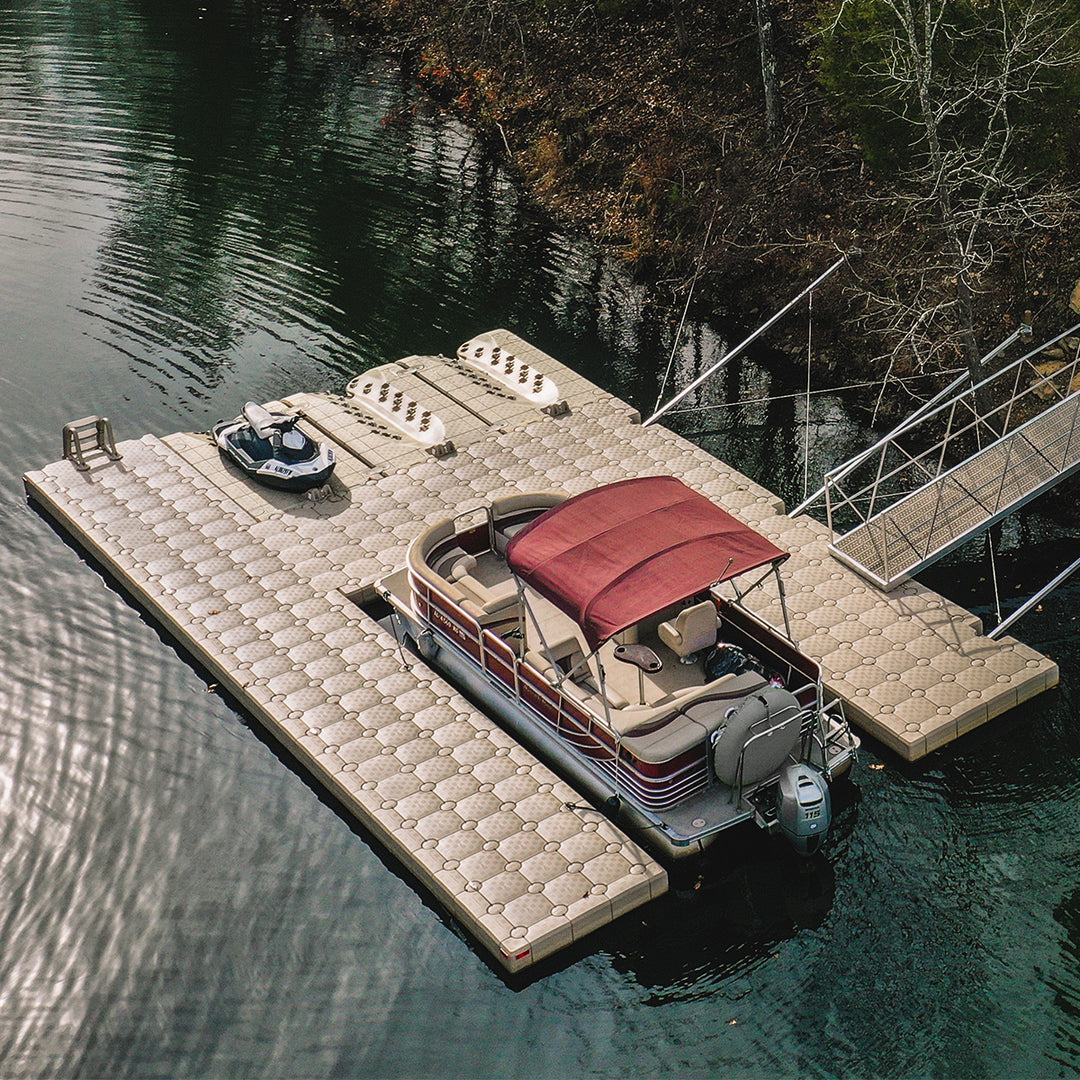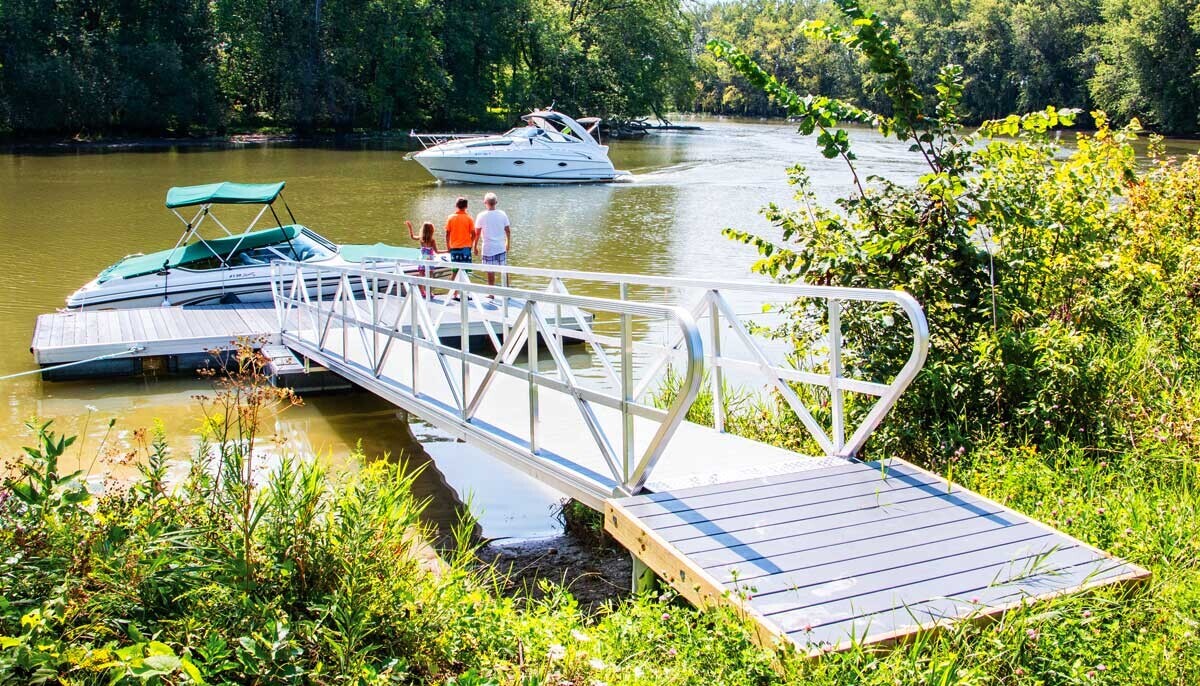Crafting Custom Solutions: Why a Floating Dock Builder is Vital for Distinct Requirements
Crafting Custom Solutions: Why a Floating Dock Builder is Vital for Distinct Requirements
Blog Article
Create the Perfect Docking Remedy With Floating Docks
Floating docks present a functional remedy for a range of maritime requirements, adapting seamlessly to varying water degrees and varied vessel kinds. As we explore the vital elements that add to the efficiency of floating docks, several vital elements pertaining to security and maintenance will certainly arise, increasing concerns concerning how to optimize your docking experience.

Benefits of Floating Docks
Floating docks deal numerous advantages that make them a perfect option for different maritime applications. Among the key benefits is their flexibility to changing water levels. Unlike taken care of docks, floating docks fluctuate with the tide, ensuring regular accessibility for vessels. This feature is specifically important in areas vulnerable to significant tidal variations or seasonal water degree adjustments.
Additionally, floating docks are commonly easier and quicker to mount compared to typical fixed frameworks. Their modular style enables simple assembly and disassembly, promoting maintenance and moving when necessary. This versatility is particularly useful for short-lived applications or in settings where problems might alter.
Floating docks also often tend to be a lot more environmentally friendly, as they decrease interruption to the seabed and surrounding water communities. Their buoyant nature lowers the danger of damages to marine life, promoting a much healthier atmosphere. Moreover, these docks can be personalized to accommodate different vessel dimensions, guaranteeing that they meet details functional requirements - floating dock builder.
Ultimately, the mix of flexibility, ease of setup, and environmental factors to consider makes floating docks a highly efficient remedy for a large range of maritime requirements.
Picking the Right Materials
Picking the proper products for floating docks is essential to guarantee durability, stability, and longevity. The selection of products directly impacts the dock's performance in various ecological problems, including exposure to water, sunshine, and possible wear from aquatic website traffic.
Usual materials used for floating docks include light weight aluminum, wood, and high-density polyethylene (HDPE) Light weight aluminum is light-weight, corrosion-resistant, and calls for very little maintenance, making it an outstanding selection for long life. Its preliminary price can be higher contrasted to various other products.
Timber, while cosmetically appealing and providing a conventional appearance, can be prone to rot and insect damage if not appropriately dealt with. Using pressure-treated wood or normally resilient species like cedar or redwood can reduce these problems.
HDPE is a preferred option due to its resistance to UV rays and chemicals, along with being eco pleasant. dock company. It is offered and light-weight in numerous shades, enabling customization
Ultimately, the appropriate product choice will depend upon specific requirements, consisting of budget plan, wanted appearances, and ecological considerations. Careful assessment of these aspects will certainly result in a durable and successful floating dock service.
Design Considerations for Stability
When creating floating docks, ensuring security is an essential facet that can significantly affect their functionality and security. Security in floating dock layout is influenced by different aspects, consisting of buoyancy, weight distribution, and the plan of parts. An ideal buoyancy system need to utilize products that give adequate lift while reducing weight. This balance makes sure that the dock stays above water, also under differing tons.
Weight circulation is critical; evenly distributing lots throughout the dock avoids turning and enhances stability. Larger designs can provide boosted security, specifically in harsh water conditions, while longer docks might require added supports to stop sagging.
Another crucial consideration is the environmental influence, consisting of wave action and wind. Incorporating functions such as sidewalls or skirting can assist mitigate the effects of environmental forces, keeping security in adverse problems. Eventually, a combination of thoughtful design, material selection, and understanding of environmental elements will certainly produce a floating dock that meets both security and security needs.
Installment Tips and Methods

Next, safeguard the essential authorizations and stick to regional laws, which might determine setup techniques and ecological factors to consider. If called for, engage a certified professional experienced in floating dock installations. Use top quality products created for aquatic environments to improve sturdiness and durability.
When placing the dock, straighten it parallel to the shoreline to help with very easy accessibility. Guarantee that the anchoring system is durable, utilizing cinder block or helical supports to support the dock versus wind and wave activity. It's essential to represent seasonal water degree variations, including potential ice movement in chillier environments.
During the installation, ascertain the dock's floatation and stability prior to wrapping up the anchoring. Regularly evaluate the installation for any kind of indicators of wear or damages. By following these suggestions and techniques, you can accomplish a safe and secure, functional, and visually pleasing floating dock setup that fulfills your requirements.
Upkeep and Treatment Guidelines
Preserving and caring for floating docks is vital to lengthening their life expectancy and making certain risk-free usage. my sources Routine inspections should this hyperlink be performed to recognize any type of signs of wear, damages, or aquatic growth. Look for cracks, loose installations, or discolored locations on the dock's surface, as these problems can compromise structural stability.
Cleaning up is necessary. Make use of a pressure washer to remove algae, barnacles, and particles, which can accumulate over time. For stubborn development, think about eco-friendly cleansing representatives that won't damage aquatic life.
Additionally, check the mooring lines and anchors regularly to guarantee they are safe and secure and totally free from corrosion. Change any torn or harmed lines immediately to maintain stability.
During extreme climate, such as storms or freezing problems, take precautionary steps. Secure the dock with added mooring lines and, if feasible, get rid of any kind of removable components to avoid damages.
Verdict
In final thought, the application of floating docks provides a efficient and flexible docking option ideal for numerous maritime applications. With correct setup and regular maintenance, floating docks can provide reliable and reliable docking experiences for a broad array of vessels.
As we check out the vital elements that add to the effectiveness of floating docks, numerous vital factors pertaining to security and maintenance will certainly emerge, raising inquiries regarding exactly how to maximize your docking experience. Unlike taken care of docks, floating docks rise and autumn with the trend, guaranteeing constant access for vessels.When designing floating docks, guaranteeing stability is a basic element that can significantly impact their capability and safety. Security in floating dock layout is influenced by numerous variables, consisting of buoyancy, weight distribution, and the plan of parts. Eventually, a combination of thoughtful design, product choice, and understanding of environmental factors will produce a floating dock that satisfies both security and safety needs.
Report this page